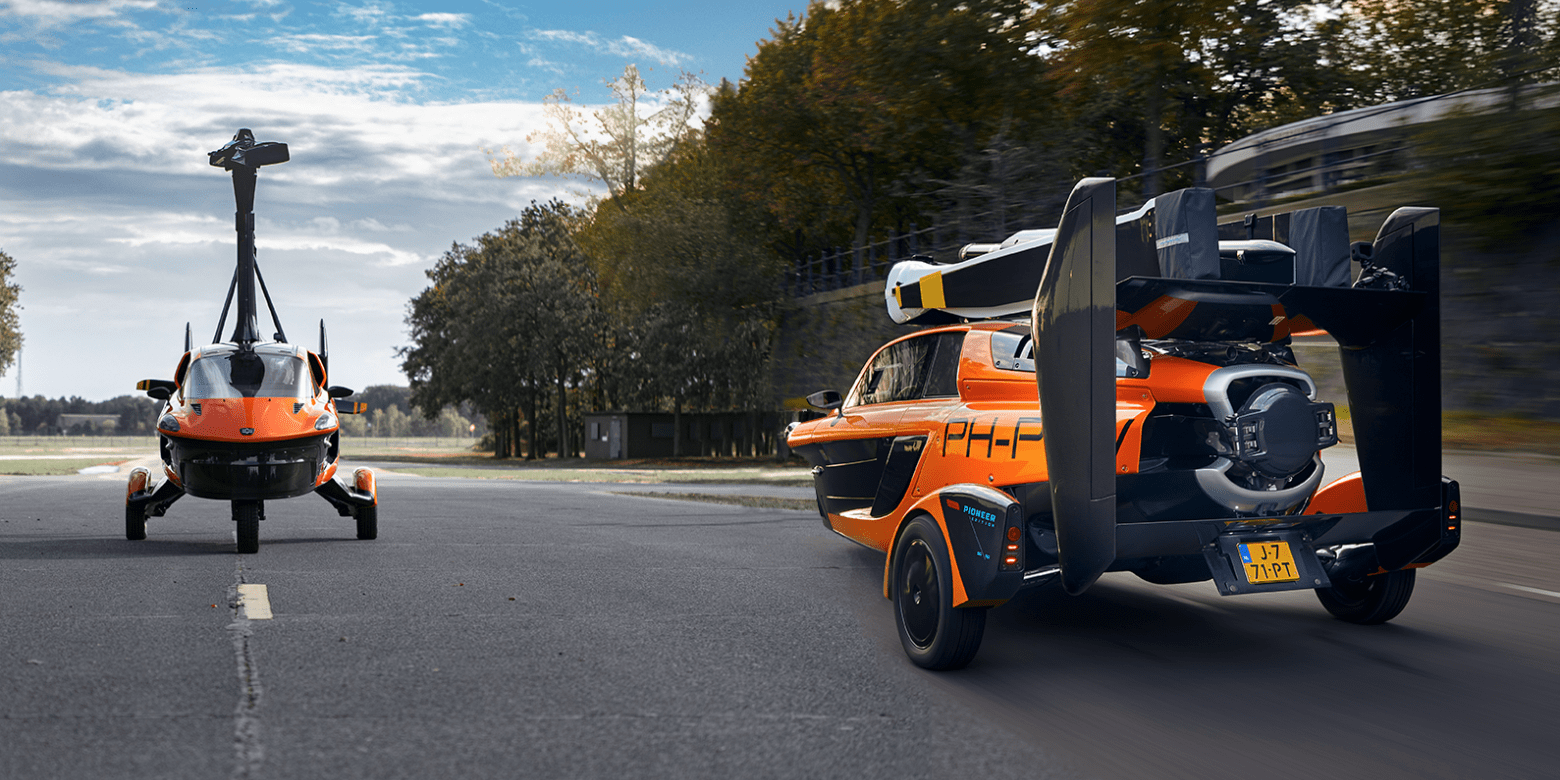
The Dutch PAL-V was supposed to be the world’s first flying car. But in July, the AirCar in Slovakia had the scoop with its flight from Nitra to Bratislava. “A pretty impressive achievement,” Marco van den Bosch, CCO at PAL-V, says of AirCar’s first flight. Nevertheless, this competition is not posing a serious threat for the time being. Developing a flying car takes a very long time. The manufacture of a commercial aircraft is governed by the guidelines of the European Aviation Safety Agency (EASA) and takes at least ten years, Van den Bosch explains. It would have to be really unusual for the AirCar to catch up with the PAL-V.
Stamina
PAL-V has now proven that it possesses stamina. The company is in its glory days: the machines are standing at the ready in a workshop in Brabant, all the lines have been set out and the flight school in Breda is ready to receive the first pilots-to-be. Sometime late next year or early 2023, Van den Bosch expects to hand over the keys to the first customers of their own flying cars. The certificate from EASA is the only thing that is still lacking. “We still have to do 125 verification flights and then we will be awarded our certificate,” he says. The speck on the horizon is getting closer and closer, it’s all starting to become very real now.”

Van den Bosch his job is to spread the word about the flying car. He often runs into skeptics; this is part of the job when you are trying to market an innovative product. “I am convinced that we are moving towards a world where new forms of mobility will play a major role. The routes to cities are becoming increasingly crowded; you can already see that more and more traffic is taking to the air. There isn’t a car brand that is not working on the development of a flying car.” He often sees potential customers come in skeptical, but after a presentation and a test flight – during which Van den Bosch willingly takes on the role of both driver and pilot – they almost always leave feeling inspired. “I always try to look really tough during such a test flight, but for me it is still a dream come true every time.”
From car to flying machine in three minutes
It is not difficult: at the exit on the highway you turn onto a runway – a distance of somewhere between ninety and two hundred meters is enough. You press the button, perform a number of actions and your vehicle is transformed from a sports car into a flying machine in just three minutes. It is also the safest option. This is because the PAL-V is a gyropter, an aircraft with a motorless rotor. “There is a large rotor on the roof that is powered by the wind. You get propulsion through the propeller. If the engine fails, it becomes a parachute. You end up with the safest plane possible that way.”
Although flying has never been so simple and safe as this, customers are not satisfied with just a driver’s license. They are all required to get their Private Pilot License (PPL). “That means you have to do about 45 flight hours and learn a bit of theory,” Van den Bosch explains. The PPL will allow you to fly all over Europe.

International interest
A PAL-V costs 299 thousand euros; 55 have been sold in the Netherlands so far. A good score in Van den Bosch his opinion, but most of the interest is coming from countries like Australia, the United States and India, where long distances have to be covered. There is also a lot of interest from England. “The roads around London are always jammed. With a flying car, that will be a thing of the past. In the future we will just fly from roof to roof,” Van den Bosch adds.
Van den Bosch expects more to change in mobility in the next ten years than it has in the last hundred years. “We will have autonomous driving, there will be new forms of aviation. In big cities, more and more air travel will take place. All of them are working on it: Uber, Mercedes, Porsche, Boeing. Flying is really going to take off.” Electric aviation is also part of those developments. Also an option for PAL-V, but not yet. “The battery technology has to be more advanced first. The batteries that are available now are still far too heavy.” Nevertheless, electric flights are certainly on the way and PAL-V is keeping a close eye on developments. Van den Bosch: “We also want to lead the way with an electric flying car.”
Also read:: Squad Mobility wants to conquer cities with lightweight solar car

